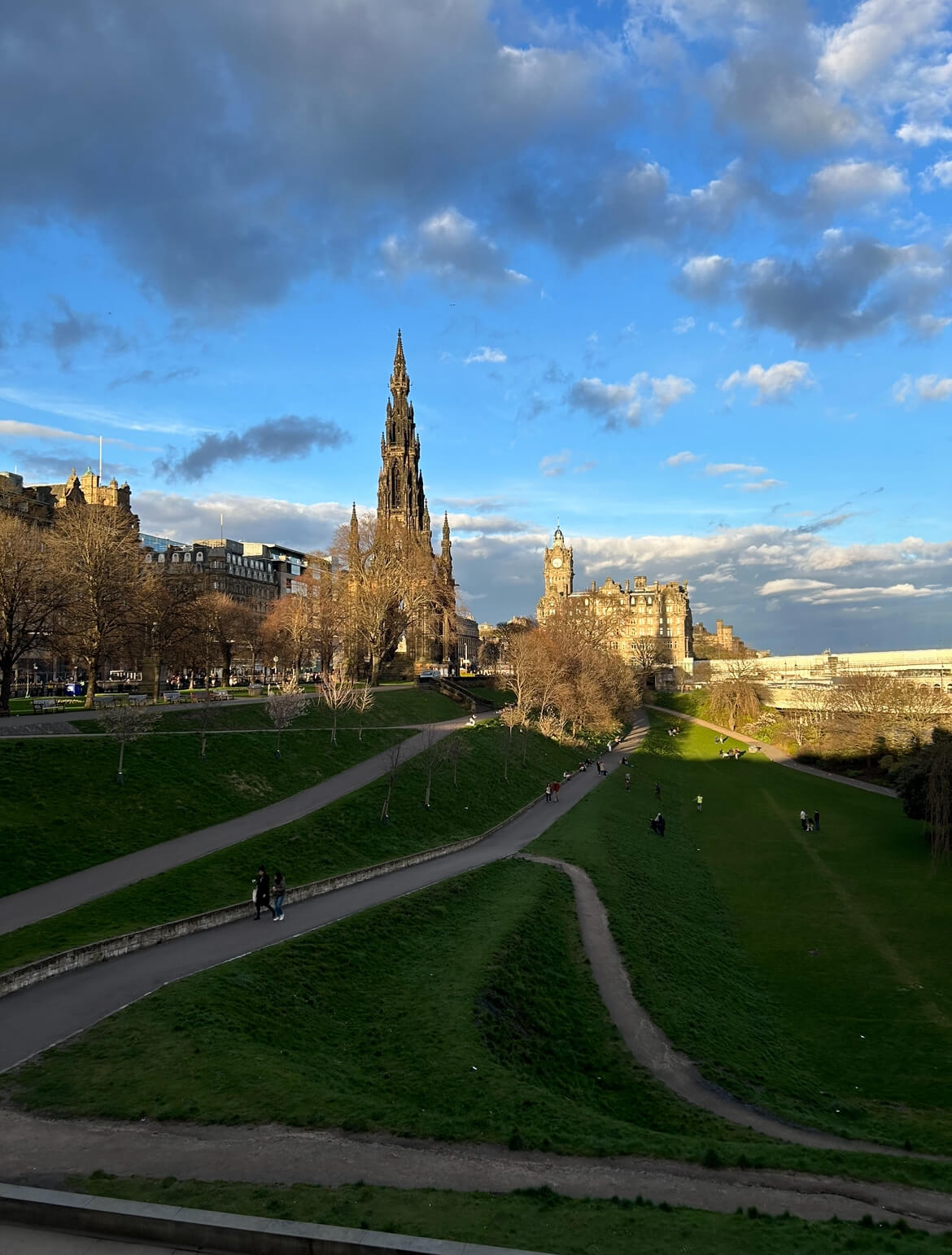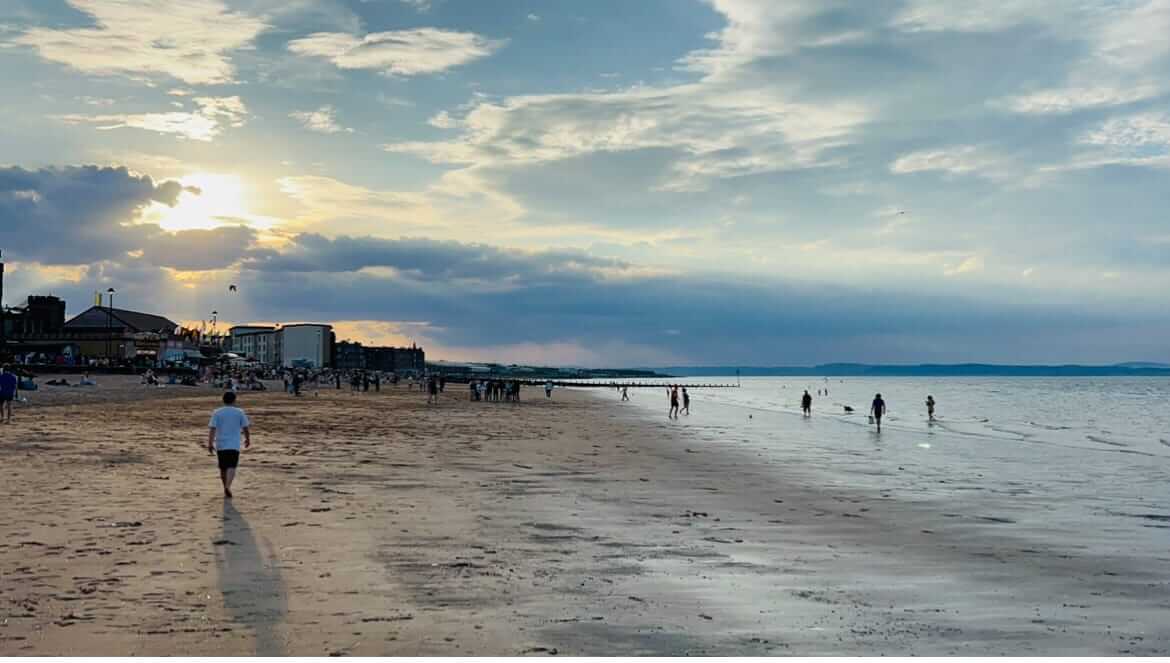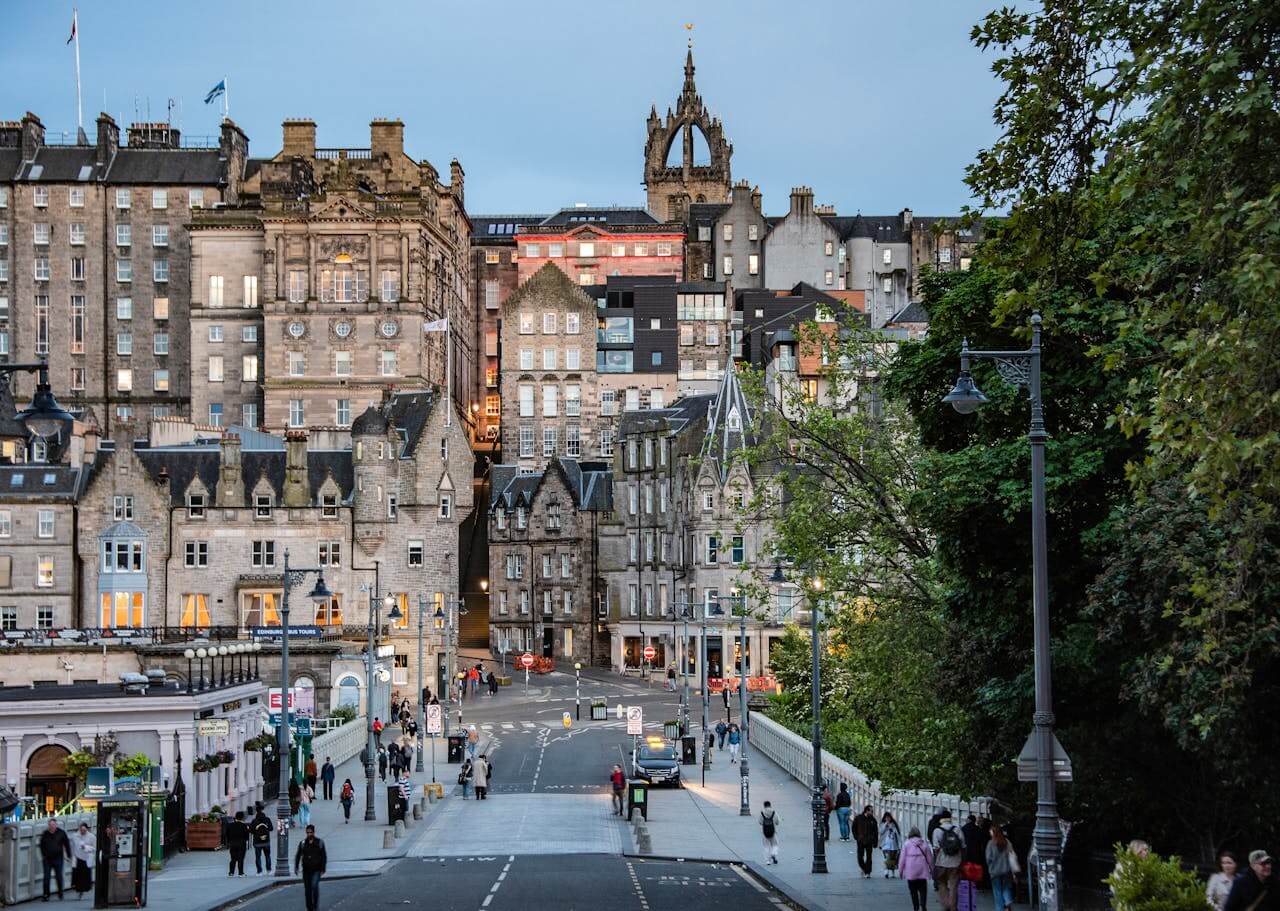Is It Safe To Travel To Scotland ? Scotland Safety Tips
Are you planning a trip to Scotland but before you make your move, you want to know Is It Safe To Travel To Scotland or not?
The short answer as per my first-hand experience is yes! I am currently staying in Scotland & I have been in your position before. However, there are a few things that you might want to consider if you are traveling to ensure you know what to expect.

In the article below, I have jotted down all the important safety tips for travel, government rules & regulations, crime, and safety at night and also touched on various other aspects that you need to consider.

I have traveled extensively in Scotland & I have never experienced or felt any safety concerns.
My Safety Guide to Scotland includes crime, health and safety stats, and additional tips to help you stay safe, so hang in!
Is It Safe To Travel to Scotland? Scotland Travel Warnings
Yes! Scotland is a very safe country to travel for both men & women. Thousands of tourists visit Scotland every year and enjoy traveling all around the country solo and with family without any issues.
The people of Scotland make it better as Scottish people are generally friendly. Even the most crowded cities like Edinburgh & Glasgow have very low crime rates.

The only thing you probably need to worry about in Scotland is the weather. United Kingdom, Belgium, Spain, etc are rated as ‘Level-2’ by the US & Canada travel advisory which means to Exercise increased caution however I don’t think anybody even considers this fact when planning a trip or do you?
As long as you are not bothering anyone and dressed appropriately, I don’t think there is anything to worry about. If I talk about Edinburgh, I haven’t heard many cases of snatching or any other petty crimes in and around the city premises.
Also, you can follow the official Scotland travel Advisory site to ensure you know the upcoming or ongoing warning issued by the government.
Scotland Crime
Scotland has one of the lowest crime rate not only in UK but also in the world. Within the UK itself, Scotland has the lowest crime rate among England, Wales & Ireland.
From my first-hand experience, I haven’t experienced any crime being targeted towards tourists or even daily goers at least in the city premises. The rate of violent crimes that happen in Scotland is also very low if we compare it to the big cities in London.

Scotland has a lower overall crime rate compared to England (5,280 vs. 7,940 per 100,000 people).
Violent crime is also lower in Scotland (1,100 per 100,000) compared to England (1,600 per 100,000).
Property crime is significantly lower in Scotland than in England (2,700 vs. 4,500 per 100,000).
The data provided in the table is a generalized comparison based on various sources, including:
- Office for National Statistics (ONS) for England and Wales:
- Scottish Government Crime Statistics:
The sources above provide detailed crime data reports used to estimate the figures. The numbers are indicative and rounded for easy comparison but should be validated against the most current reports available on these official platforms.
Is Scotland Safe At Night?
Scotland is generally considered a safe country, including at night, but you have to be a little wise regarding safety. In general, it is considered safe, but you also need to ensure that you are not in unwanted places at night & inviting danger unnecessarily.

From my first-hand experience, I can say that I returned home via Public transport at 2 am and 3 am from Princes Street (city center) and it was not a problem. You might come across a few people who are intoxicated but it’s better to just avoid them & ignore any comments they make.
Safety in Cities vs. Rural Areas
- Cities like Edinburgh and Glasgow: Having stayed in Edinburgh These cities are largely safe, but like any urban area, certain neighborhoods may have higher crime rates, particularly at night. It’s always advisable to stay in well-lit, populated areas and avoid secluded places after dark.

- Tourist Areas: Tourist-heavy areas like Edinburgh’s Royal Mile or Glasgow’s city center are typically well-policed and safer at night. However, petty crimes like pickpocketing can occur.
- Rural Scotland: In smaller towns and rural areas, the crime rate is much lower, and these places are considered very safe, even at night.
Common Crimes
- The most common crimes in Scotland are petty theft and alcohol-related disturbances, particularly in city centers on weekends.
- Violent crime, though present, is relatively low, especially compared to many major cities globally.
Tips for Staying Safe at Night
- Stick to well-lit, busy areas: Especially in larger cities like Glasgow and Edinburgh.
- Avoid excessive alcohol: Drunken behavior can lead to disturbances in some areas.
- Public transportation: Scotland has reliable transport options, and taxis or ride-shares are generally safe.
In summary, Scotland is relatively safe at night, but it’s wise to follow general precautions, particularly in urban areas.
How safe is Scotland for driving?
1. Road Conditions
- Highways and Main Roads: The motorways and major roads are well-maintained, connecting cities like Edinburgh, Glasgow, and Inverness.
- Rural Roads: In the countryside, roads can be narrow, winding, or even single-track. You may have to pull into passing places to let other vehicles pass.
- Weather: Scottish weather can be unpredictable. Rain, fog, and even snow (in winter) can make driving tricky, especially in rural or mountainous areas.
2. Driving Rules
- Drive on the Left: Like the rest of the UK, drivers in Scotland keep to the left, which may take some getting used to if you’re from a country that drives on the right.
- Speed Limits: On highways, the speed limit is usually 70 mph (112 km/h), while rural roads are generally 60 mph (96 km/h). In towns and cities, it’s often 30 mph (48 km/h).
- Roundabouts: Scotland has many roundabouts, and you must give way to vehicles coming from the right.
3. City vs. Rural Driving
- Cities: Driving in cities like Edinburgh and Glasgow can be busy, with narrow streets and limited parking. It might be easier to use public transportation.
- Countryside: Rural roads can be scenic but challenging, especially with narrow lanes and sharp turns.
4. Wildlife and Animals
- In rural areas, it’s common to see animals like sheep or deer near or on the roads. Be cautious, particularly early in the morning or evening.
5. Fuel Stations
- Gas stations can be scarce in remote areas, so it’s a good idea to fill up when you have the chance, especially if you’re heading into the countryside.
6. Road Signs
- Road signs are in English, and in some regions, like the Highlands, you’ll see signs in Gaelic too.
7. Emergency Services
- Scotland has reliable emergency services. If you need help, dial 999 for the police, ambulance, or fire services.
Overall, driving in Scotland is safe if you pay attention to the weather, follow the rules, and take care on rural roads. It’s a great way to explore the beautiful countryside.
Is Scotland safe from diseases?
Yes, Scotland is a safe place when it comes to health, and there aren’t any major disease risks for travelers. Here’s what you should know:
1. Health Standards
Scotland has a high-quality healthcare system, and there are no serious disease outbreaks.
Routine vaccines like tetanus, measles, and flu shots are usually all that’s needed for most travelers.
2. Water and Food
Tap water is safe to drink across Scotland.
Food safety is also good, so there’s little risk of getting sick from eating out.
3. Ticks and Lyme Disease
In rural areas, especially in the Highlands, there’s a small chance of Lyme disease from tick bites.
If you’re hiking, wear long sleeves, use bug spray, and check for ticks after spending time outdoors.
4. Cold Weather
Winters can be very cold, particularly in the Highlands. Dress warmly to avoid cold-related health issues like hypothermia.
Flu season happens in winter, so getting a flu shot before your trip could be helpful.
5. COVID-19
By 2024, COVID-19 is mostly under control in Scotland, but it’s still important to follow any local health advice, like vaccinations or mask-wearing.
Overall, Scotland is very safe in terms of diseases, and basic health precautions will keep you in good shape during your trip.
Is it safe to drink the water in Scotland?
Yes, the tap water in Scotland is safe to drink. It’s clean, high quality, and regularly tested to meet strict safety standards. In fact, Scotland is known for its fresh and great-tasting tap water, especially in rural and Highland areas where the water often comes from natural sources.
You don’t need to buy bottled water unless you prefer it, as tap water is perfectly safe for drinking.
Beach safety in Scotland
Scotland’s beaches are beautiful, but it’s important to stay safe while enjoying them. The weather can change quickly, and the water is often cold, so being careful is key. Before going to the beach, check the weather and tide conditions.

The sea in Scotland can have strong currents, so avoid swimming when the water is rough. It’s always a good idea to go to beaches with lifeguards and follow any warning signs. When swimming, stay in the areas marked as safe and try not to swim alone.
The cold water in Scotland can be dangerous if you jump in too quickly, so enter the water slowly to let your body get used to it. If you’re with children, keep them close by and make sure they have flotation devices if they’re near the water.

Always watch them, especially when waves are big. Lastly, remember to keep a safe distance from wildlife like seals or jellyfish, which are common along the coast.
Check Weather, Tides, and Lifeguards:
Before going to a beach in Scotland, make sure to check the weather, tide times, and if there are lifeguards on duty. Lifeguards help keep people safe by watching the water and helping anyone in danger. It’s safer to swim at beaches with lifeguards and to follow their advice and any safety signs.
Be Careful in Cold Water:
The water in Scotland is cold even in summer. Enter the water slowly so your body can get used to the temperature. Swim only in areas marked as safe, and try to stay where lifeguards can see you. Never swim alone.
Watch Children and Respect Wildlife
Always keep an eye on children, especially near the water, and use flotation devices if needed. While lifeguards can help, adults should always supervise kids. Also, keep a safe distance from wildlife like seals and jellyfish to avoid any harm.
Do you need Bug Spray in Scotland? Bug Safety Tips
Yes, you might need bug spray in Scotland, especially in the warmer months and certain places. The main issue is midges, which are tiny biting insects that live in the Scottish Highlands, near lochs, and in forests.

They are most active in the summer, especially in the early morning and evening, and can be annoying when the weather is warm and still. Using bug spray is a good way to protect yourself from midges.
Wearing long sleeves and trousers can also help in areas where there are a lot of midges. In cities or along the coast, midges are less common, so bug spray may not be needed. But if you are hiking or camping in rural areas, it’s a good idea to bring some with you.
Food Safety in Scotland:
Food safety is very important in Scotland. The country has a strong system to make sure the food people eat is safe. Scottish food safety rules are based on UK laws, European regulations, and some Scotland-specific guidelines. The main goal is to protect public health, prevent food-related illnesses, and keep people confident in the food they buy and eat.
Who Regulates Food Safety in Scotland?
In Scotland, Food Standards Scotland (FSS) is the main group responsible for food safety. It was set up in 2015 to make sure that food in Scotland is safe. FSS creates the rules for food safety, checks food businesses, and ensures that these businesses follow the rules. It also helps people and businesses understand how to handle food safely. Scotland’s food safety laws are based on UK-wide rules, like the Food Safety Act 1990 and the General Food Law Regulations 2004. However, FSS works on its own, allowing it to make rules that fit Scotland’s specific needs. This helps maintain high food safety standards across the country.
Key Food Safety Issues
One of the biggest concerns in Scotland is preventing foodborne illnesses, which are caused by bacteria like E. coli and salmonella. FSS also works to avoid contamination from chemicals and allergens.
To help prevent these problems, FSS regularly inspects food businesses such as farms, factories, and restaurants. It also checks the food supply for any risks and takes action when unsafe food is found.
Educating the public is another important part of food safety. FSS provides advice to help people store, cook, and prepare food safely. For example, through campaigns like “Food Safety Week,” FSS teaches the public about preventing cross-contamination and keeping kitchens clean at home and in businesses.
Food Safety for Exports
Scotland is well known for exporting quality food, especially seafood and whisky. To keep its good reputation, Scotland has strict food safety rules for products that are sold internationally. Food for export must meet high hygiene and safety standards, ensuring that it is safe for people around the world. These measures protect consumers and help Scotland remain a top exporter of safe and quality food products.
In summary, Scotland takes food safety seriously. With the work of Food Standards Scotland and clear regulations, the country ensures that the food supply is safe for everyone, whether at home or abroad.
Conclusion: Is It Safe To Travel To Scotland
In short, Scotland is a safe place to travel, with low crime rates, friendly people, and good healthcare. While some areas may need extra caution, most cities and countryside areas are secure for visitors.
It’s good to be prepared for changing weather, especially in remote or coastal areas. By checking travel advice and following local guidelines, travelers can have a safe and enjoyable time exploring Scotland’s beautiful scenery, history, and culture.
